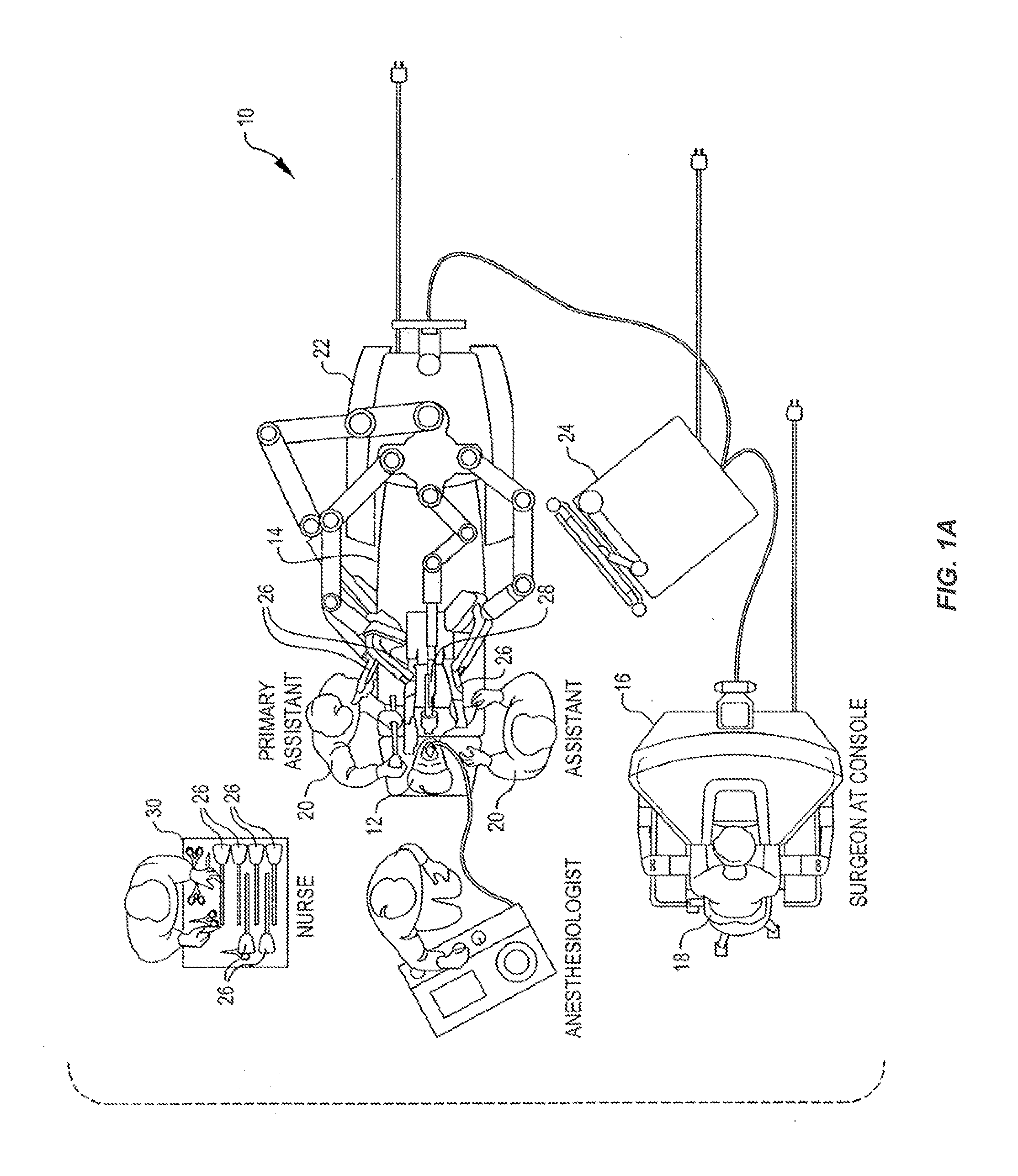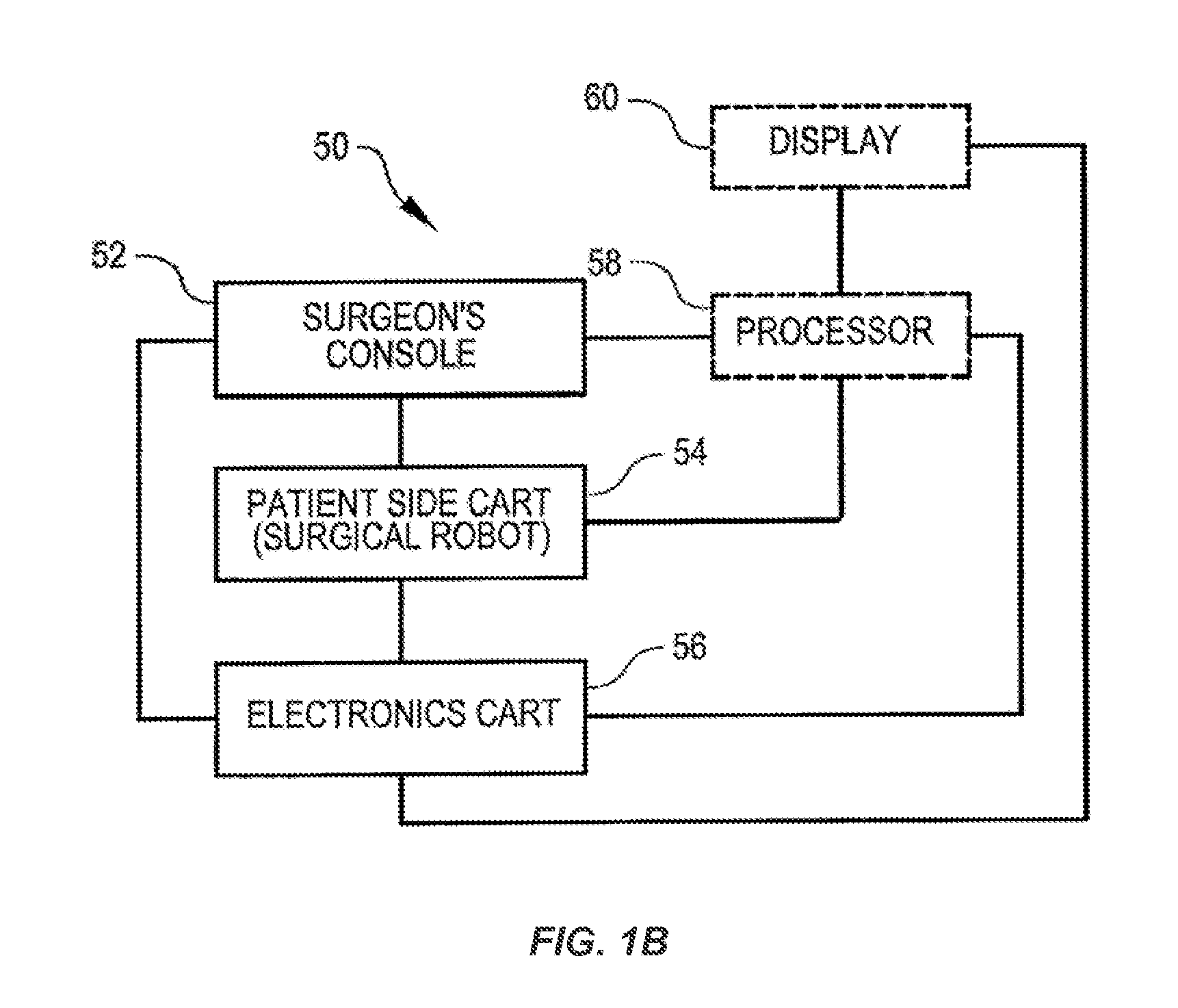Inter-Operative Switching of Tools in a Robotic Surgical System
a robotic surgical system and tool switching technology, applied in the field of improved surgical and/or robotic devices, systems, and methods, can solve the problems of system more prone to error, less invasive, and added layers of complexity
- Summary
- Abstract
- Description
- Claims
- Application Information
AI Technical Summary
Benefits of technology
Problems solved by technology
Method used
Image
Examples
first embodiment
[0105]FIG. 8A is part of a robotic system including a manipulator assembly 810 and a support structure 850 according to a The manipulator assembly 810 includes a manipulator 820 and a tool 840, where the manipulator 820 is disposed between and may be connected to each of the support structure 850 and the tool 840.
[0106]The manipulator 820 includes a plurality of links 822 coupled together by joints 824. The manipulator 820 may also include a number of actuators 826 such as motors, and a number of sensors 828 such as potentiometers, where each joint may be associated with an actuator and / or a sensor. The actuator may be operable to control a degree of freedom of the manipulator, such as by controlling one or more joints to rotate, translate, etc. Further, the sensor may be operable to measure a position or state of each of a corresponding joint.
[0107]The manipulator 820 also includes a connector 830 at a proximal end that is shaped to engage a corresponding connector of the support ...
second embodiment
[0118]FIG. 8B is part of a robotic system including a manipulator assembly 810 and a support structure 850 according to a The manipulator assembly 810 and support structure 850 in this embodiment are similar to that discussed with reference to FIG. 8A, and thus the structures and functions discussed with reference to FIG. 8A are equally applicable for this embodiment.
[0119]In accordance with this embodiment, however, the tool 840 includes an electrical / optical contact 846 coupled to and operable to communicate information with an internal element 848 of the tool 840. The element 848 may be, e.g., an actuator such as actuator 826 and / or a sensor such as sensor 828. The actuator may be operable to control a degree of freedom of the tool 840, and the sensor 828 may be operable to sense a position and / or state of the degree of freedom. For example, the actuator may be operable to control a joint of the tool 840, and the sensor may be operable to sense a position of the joint. In some e...
third embodiment
[0121]FIG. 8C is part of a robotic system including a manipulator assembly 810 and a support structure 850 according to a The manipulator assembly 810 and support structure 850 in this embodiment are similar to that discussed with reference to FIG. 8A, and thus the structures and functions discussed with reference to FIG. 8A are equally applicable for this embodiment.
[0122]The tool 840 in this embodiment includes a tool identification unit 845. The tool identification unit 845 may store a tool identifier that identifies one or more characteristics of the tool. For example, the tool identifier may identify the type of tool (e.g., endoscope, jaws, vacuum, electrosurgical paddle, etc.), the number of degrees of freedom of the tool (e.g., 3 degrees of freedom, 4 degrees of freedom, 5 degrees of freedom, etc.), the types of degrees of freedom (e.g., motion degrees of freedom such as roll, translate, etc., actuation degrees of freedom such as activating a vacuum or electrode, etc.), etc....
PUM
 Login to View More
Login to View More Abstract
Description
Claims
Application Information
 Login to View More
Login to View More - R&D
- Intellectual Property
- Life Sciences
- Materials
- Tech Scout
- Unparalleled Data Quality
- Higher Quality Content
- 60% Fewer Hallucinations
Browse by: Latest US Patents, China's latest patents, Technical Efficacy Thesaurus, Application Domain, Technology Topic, Popular Technical Reports.
© 2025 PatSnap. All rights reserved.Legal|Privacy policy|Modern Slavery Act Transparency Statement|Sitemap|About US| Contact US: help@patsnap.com



